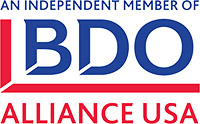
Fall has always been one of my favorite times of year. The smells, the leaves, and a full docket of sports including football, hockey, basketball and baseball playoffs. It is also busy season for those of us who work with not-for-profit organizations.
Most people probably assume that accountants will always be the busiest in the annual winter-spring ritual known as “tax season”. But here at Sassetti LLC, one of our biggest client groups is our nonprofits, many of whom end their years in June, July and August. Our clients are also busy gearing up for another yearly ritual: Annual Fund season.
If you support nonprofit organizations, no doubt you will be receiving many annual requests for a year end donation, preferably prior to December 31, 2017 to allow for tax deductions on your 2017 return. Are you someone who actually opens up these letters and considers a donation? Do you give the same amount each year, or do you wish you had more information about the charities you choose to contribute to?
Thoughtful and truly effective giving often involves planning. To be a difference maker, you should consider if you are truly maximizing the available tax benefits. If you had an unusual year for income, you may want to consider either making an impact donation or setting up a donor advisor fund at an organization like the Oak Park River Forest Community Foundation (www.oprfcf.org). You can make a sizable donation and get a maximum tax benefit, while helping the donee organizations for years to come. Other tax advantaged giving choices include donating appreciated stock (you avoid the capital gains tax), real estate or a used car.
No matter what you are doing, be careful to do some homework. If you are considering a major gift, first ask the organization if they have any special plans. Maybe you can set up a scholarship or building fund in your name. Also, be aware that telemarketers who call and ask for donations often encourage you to make donations that are not tax deductible, or are for profit companies that only actually donate 10% to charity. I would stick with organizations you know or can easily research. There are websites like GuideStar and Charity Navigator that provide financial information on organizations.
Jeff Schroeder
Partner
Sassetti LLC




